-
Global Fulfillment Innovation Centers on ESG in 2023

Global Fulfillment Innovation Centers on ESG in 2023. Environmental, social, and governance (ESG) and its growing importance in supply chain management is a top priority for global fulfillment managers. ESG supply chain management is critical to maximizing the benefits of omnichannel ecommerce and warehousing and distribution services. ESG in supply chains refers to the three key factors companies consider when evaluating their environmental, social, and governance impacts. As supply chains become increasingly global and complex, ESG considerations are gaining importance in supply chain management.
Companies are now expected to manage not only their own ESG supply chain risks and impacts but also those of their suppliers and partners. This requires a focus on transparency, accountability, and sustainability across the supply chain. As reported by the Harvard Business Review, “an organization must view the available options and then adapt in near-real time by collaborating with external partners” (Padgaonkar). Let’s take a closer look at the top five things to know about ESG in global trade for 2023.
The Shipper’s Role in Global Fulfillment and Trade
Shippers are responsible for transporting goods from the point of origin to the end of consumption. As such, they play a critical role in global trade and are a crucial stakeholder in ESG supply chain management. Shippers are expected to comply with emissions, labor practices, and product safety regulations. They are also responsible for selecting carriers and modes of transportation that are environmentally sustainable and socially responsible.
Today’s global trade fulfillment and supply chain management depend on advanced and integrated technologies such as mobile apps, cloud-based platforms, real-time data analysis, on-demand communications, and intelligent predictive analysis. Establishing an innovative and effective marketing strategy boosts communication with all involved parties easier. That includes increased collaboration to handle load and product information, marketing campaign points, or import and export logistics.
ESG management within the modern supply chain makes it easier to stay ahead of the competition and overcome the most common ecommerce challenges. Consider the impact in the value chain. According to Forbes, “businesses need to start tracking emissions, diversity and other ESG data and reporting it, similar to how they annually report financial data. This already represents major challenges for many organizations, even before considering that much of the same data will need to be gathered from suppliers. That’s because emissions that can be traced back to supply chain activities are categorized as “scope 3” emissions and must also be reported. Given that up to two-thirds of a company’s emissions can fall under scope 3, this isn’t a regulation that organizations should delay preparing for” (Three International Regulations That Will Impact US Supply Chains In 2023). Clearly, shippers that need to gain control over their full emissions in the value chain can do so with a better overall network design.
Increased Emphasis on ESG and Integrated Supply Chain Design:
ESG in supply chain considerations is now integrated into supply chain design decisions, including product design, supplier selection, and transportation planning.
This requires reducing carbon emissions, promoting social responsibility, and ensuring good governance throughout the supply chain. Companies are also enhancing their supply chain transparency and traceability, allowing them to manage ESG risks and impacts better.
Best ESG supply chain design practices include setting clear ESG performance goals, developing a comprehensive ESG strategy, engaging with suppliers and partners on ESG issues, and incorporating ESG in supply chain considerations into product and process design.
Growing Importance of Global Fulfillment in ESG Goals
Global fulfillment plays a critical role in supporting sustainable supply chains. Companies are increasingly looking to reduce their carbon footprint and other ESG-related impacts by using more sustainable transportation modes, such as rail and sea, and by consolidating shipments to reduce waste and emissions. They also explore alternative fulfillment models, such as regional distribution centers and direct-to-consumer delivery, to reduce transportation-related emissions, including those occurring in warehousing and distribution.
Companies can use global fulfillment strategies to reduce their carbon footprint and other ESG-related impacts by optimizing transportation routes, selecting carriers with low emissions, and consolidating shipments. They can also use technology to improve visibility and traceability throughout the supply chain, allowing them to manage ESG risks and impacts in global fulfillment effectively.
It also helps improve the customer journey and simplifies tracking of all steps involved in any transaction- whether the goods are moved from a distribution center, a brick-and-mortar store, or from a shop online.
The Rise of Omnichannel Ecommerce Reshapes ESG Supply Chain Management
The growth of omnichannel ecommerce is creating new challenges for ESG supply chain management. Companies must deliver products quickly and efficiently across multiple channels while managing their ESG in supply chain risks and impacts. This requires focusing on sustainability, transparency, and innovation across the supply chain.
Omnichannel and multichannel processes complement the ecommerce trend and make it easier for retailers, wholesalers, and consumers to get what they need when needed. With an innovative and fully integrated omnichannel approach, ecommerce, omnichannel retail, and even wholesale companies implement ESG processes much more efficiently. And funding is projected to be more accessible following additional investment on behalf of governments.
For example, WBCSD noted that, “The US Inflation Reduction Act, which is projected to pour over $400 billion into the US sustainability market over the next decade” (ESG Insights: 10 Things That Should Be Top of Mind in 2023).Potential solutions for managing ESG risks associated with omnichannel commerce include using data analytics to optimize transportation routes and reduce emissions, using sustainable packaging materials, and exploring alternative fulfillment models. Companies can also engage with their customers and stakeholders on ESG issues, promoting sustainability and social responsibility throughout the supply chain.
Innovation in Warehousing and Distribution for ESG in Supply Chains
New technologies and processes are improving ESG performance in warehousing and distribution. Companies use automation, robotics, and artificial intelligence to reduce waste, improve efficiency, and reduce emissions. They are also exploring new warehouse designs that promote sustainability, such as using renewable energy sources and optimizing natural lighting.
Specific innovations in warehousing and distribution supporting sustainable supply chains include green roofs, energy-efficient lighting systems, a focus on improved omnichannel ecommerce, and renewable energy sources. Companies are also exploring alternative delivery models, such as drone and autonomous vehicles, to reduce emissions and improve efficiency. But regardless of what options exist, companies must take notice and get the right data. As reported by Matt Rickerby of Extensiv, “Inventory analytics are an essential part of any inventory management solution. They give you valuable data about how your inventory is performing, how much it costs, and more. Multi-location inventory management solutions often provide a variety of Key Performance Indicators (KPIs) and reports to help managers make informed decisions about their business operations. (‘How to Improve Your Multi-Location Inventory Management’)”
This use of data will guide companies toward a more sustainable future.
Streamline Omnichannel Fulfillment With ESG in Mind by Partnering With Moduslink.
Mastering ESG services are more accessible with the right global fulfillment partner who can offer warehouse and distribution services that meet your needs. Reward your loyal customers and offer the finest personalized experience and shipping services with ModusLink. Omnichannel marketing and ecommerce integration is the way of the future for supply chain management and operations. Contact ModuLink today to learn more and to see how environmental, social, and governance integration can improve your global trade processes.
Bibliography
“ESG Insights: 10 Things That Should Be Top of Mind in 2023.” World Business Council For Sustainable Development (WBCSD), 16 January 2023, https://www.wbcsd.org/Overview/News-Insights/Member-spotlight/ESG-Insights-10-Things-That-Should-Be-Top-of-Mind-in-2023. Accessed 10 March 2023.
“How to Improve Your Multi-Location Inventory Management.” https://www.extensiv.com/blog/multi-location-inventory-management, https://www.extensiv.com/blog/multi-location-inventory-management. Accessed 10 March 2023.
Padgaonkar, Pranav. “How to Build Supply Chain Resilience Without Sacrificing ESG Goals or Inflating Costs – SPONSOR CONTENT FROM GEP.” Harvard Business Review, 29 March 2023, https://hbr.org/sponsored/2023/03/how-to-build-supply-chain-resilience-without-sacrificing-esg-goals-or-inflating-costs. Accessed 31 March 2023.
“Three International Regulations That Will Impact US Supply Chains In 2023.” Forbes, https://www.forbes.com/sites/forbesbusinesscouncil/2023/03/09/three-international-regulations-that-will-impact-us-supply-chains-in-2023/?sh=2c18b7186b3f. Accessed 10 March 2023.
Disclaimer:
Content is the opinion of ModusLink Corporation and is not intended to act as compliance or legal advice.
.
-
Returns Management: Are You Not Making Money on Returns?
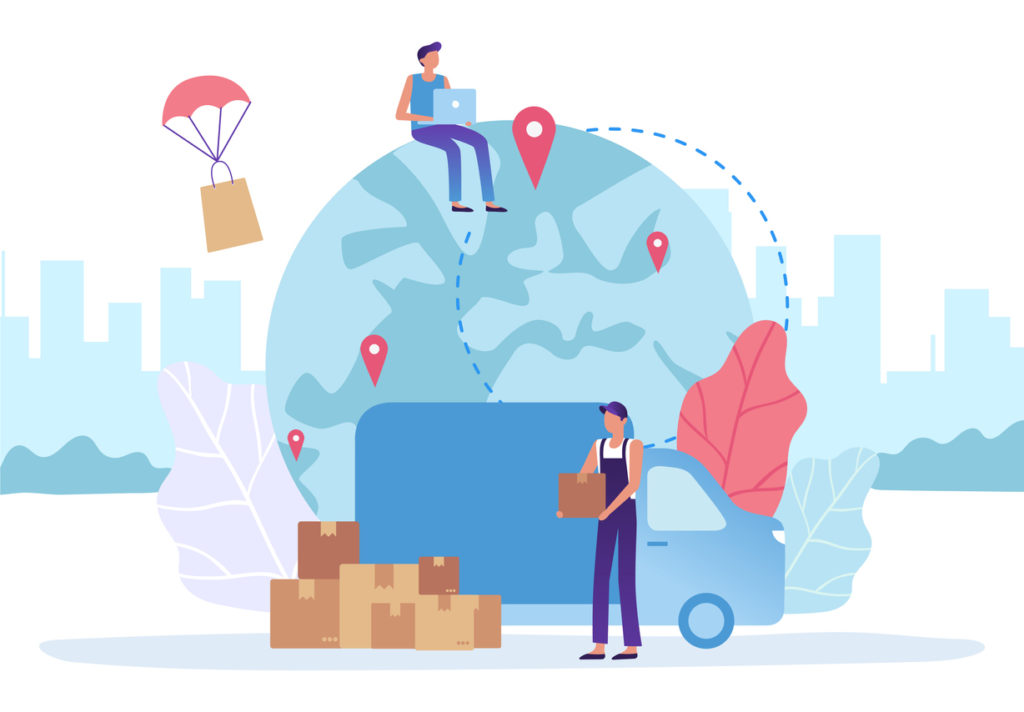
Returns Management Returns management remains a vital part of today’s supply chain processes. According to data shared by Vue.AI, “more than 60% of online shoppers say that they look at a retailer’s return policy before making a purchase. When an e-commerce site says ‘no returns or refunds,’ it makes a shopper nervous and less likely to trust the retailer (Ravishankar and Rao).”
It’s not enough to hope customers don’t return products; they will. Today’s supply chain companies need to make money on returns. Unlike the forward view, reverse logistics follow the opposite process. This unique point of origin leads to possible damage to the bottom line and challenges in supply chain management.
Further, depending on the product, it may be necessary to recycle, restock, reuse, or retire (properly dispose of) each returned item. That’s a tall order to meet. Understanding such processes begins with understanding the facts of the reverse logistics meaning and process, its common mistakes, and a few best practices for maximizing their value.
Reverse Logistics and Returns Management Are an Opportunity for Profit.
Returns management and reverse logistics have become crucial components of any company’s business strategy. Of all the supply chain trends, finding ways to enable true optimization remains elusive. In that realm, better returns management is still far from a reality for many e-commerce companies. With returns accounting for 30%, reselling returned products on secondary or export markets can help offset losses and expand market share.
Even more importantly, returns rates have hit their highest in the 2022 holiday shopping season. According to industry data experts, “Salesforce reported a 63% spike in returns during November and December, year over year (Ravishankar and Rao).”
Not only does this mean lost profit is recouped through returns generated from the secondary markets, but it also means an enlarged pool of potential customers in places that may not otherwise have been accessible. Embracing returns as part of a company’s plans can increase revenue while growing market share and securing a more secure end-to-end supply chain process.
Common Mistakes in Returns Management.
Companies make a few common mistakes when handling returns processes and identifying strategies for a more successful reverse logistics operation. These issues include:
- Not having a dedicated logistics team causes delays and inefficiencies in processing returns. It also creates an additional workload for other team members, leading to increased customer dissatisfaction.
- The lack of trackable return shipping options leads to difficulty tracking returns and can also make it difficult for the company to keep track of returns. This causes frustration and potential lost or misplaced returns for customers.
- A proper reverse logistics process must be clarified for handling returns and creating other missteps in downstream processes, including restocking.
- Failing to create a system for identifying and documenting defective products makes it difficult to track the source of defects and also makes it difficult to identify patterns or trends in defects.
- Having a plan for dealing with overstock or excess inventory from returns results in unnecessary costs for the company and makes it challenging to manage inventory levels.
Best Practices for Returns Management.
Following best practices for returns management is essential for businesses to create a streamlined, cost-efficient operation. However, the strategy behind reverse logistics isn’t always about managing inbound flows. Instead, it should consider recycling goods, reclamation of raw materials, and reuse cases, especially for e-commerce goods. Still, a few additional best practices transcend these “r’s” of reverse logistics and return management. These best practices include:
- Dedicate a logistics team to manage returns. A dedicated team ensures all returns are handled quickly and efficiently, including packaging or other kitting processes to ready items for resell.
- Provide customers with a trackable return shipping option. Providing real-time information on the status of their product’s journey reduces complaints.
- Develop and implement an effective reverse logistics process. Tracking data minimizes the cost and environmental impact of returns processes.
- Create a system for identifying and documenting defective products. Knowing what’s working will help to avoid costly errors or discrepancies down the line.
- Establish a plan for dealing with overstock or excess inventory from returns. A method for every possibility will aid in decision-making based on data insights.
- Ensure adequate communication and customer service during the returns process. Transparency and communication improve customer satisfaction and loyalty.
- Regularly review and update return policies and procedures. Regular updates and changes to operations are essential to supply chain optimization and keep your returns strategy ahead of the competition.
Boost Returns Management Processes With ModusLink.
Today’s consumers have the ultimate power of choice and the power of the purse. If a product doesn’t meet their expectations, or even if they simply decide they dislike it, shippers need to have a clear strategy for handling returns management. That’s the only way to avoid the inevitable backlash associated with zero or poor returns policies. Fortunately, working with a 3PL can help you understand your opportunities and threats within returns and what’s needed to succeed. Choose ModusLink, and don’t sweat the details of returns management. Connect with a ModusLink expert to get started now.
Bibliography
Atkinson, Helen. “Sick of Returns? Use Them to Drive Brick-and-Mortar Buys.” Supply Chain Brain, 17 January 2023, https://www.supplychainbrain.com/articles/36426-sick-of-returns-use-them-to-drive-brick-and-mortar-buys. Accessed 17 January 2023.
Ravishankar, Shyam, and Abhirami Rao. “20 Biggest E-commerce Challenges in 2023 + Simple Solutions.” Vue.ai, 5 January 2023, https://vue.ai/blog/ai-in-retail/ecommerce-challenges-in-2021/. Accessed 16 January 2023.
Disclaimer:
Content is the opinion of ModusLink Corporation and is not intended to act as compliance or legal advice.
.
-
Benefits in Finishing Packaging and Distribution Near Customers

warehouse order picker packing and sealing cardboard box with tape for dispatch As shippers and importers, there are many factors to consider when packaging and shipping products. In e-commerce, variety and agility are core to success. That includes packaging and distribution resources. It’s your role to figure out to reoptimize efforts and reduce costs. That’s a basic premise in any supply chain optimization strategy. Of course, it’s difficult to understand the importance and how packaging can influence operations on a global scale when rates are still so unstable.
Consider this. Despite declines in the shipping industry, rates are still higher than average, putting new pressure on packaging and distribution strategies. According to Reuters’ data sources, “long-term contract rates finished 2022 about 20% lower than the pandemic peak of more than $8,000 per container. [And] maritime consultancy Drewry […] expects contract rates to halve in 2023. That forecast would put rates at about $3,200 versus the pre-pandemic rate of around $1,500 (Baertlein).”
Rates at this level are simply inefficient globally, meaning that shippers should rethink their packaging and distribution strategies. Specifically, finishing product packaging closer to end users will yield significant benefits and opportunities. Here are the top benefits of such a strategy.
1. Leverage Bulk Packaging Solutions to Get Lower Costs.
Companies looking to reduce their packaging and distribution costs should consider bulk packaging solutions. Bulk packaging is typically sourced from packaging distributors that partner with various manufacturers. This allows them to provide clients with a wide selection of packaging materials and design options. Packaging distributors buy in bulk and save money on packaging costs. Thus, businesses can often save significantly more than they would on their own.
2. Improve Flexibility to Create Brand or Region-Specific Packaging.
Working with a packaging supplier to improve flexibility and create multiple packaging designs tailored is an advantage. Imagine building packaging to target specific brands or regions. Plus, packaging customization allows for unique packaging formats that help the product stand out from its competitors. For brands in highly competitive industries, custom packaging presents the possibility of increased visibility, eventually leading to higher sales. Custom packaging also makes it easier for companies to incorporate their branding messages into the packaging design, defining their presence in the market.
3. It Enhances the Optimization of Resources.
Optimizing packaging and distribution is essential to increase efficiency and minimize costs. Understanding the packaging and distribution process can help businesses save more resources, enabling them better to adjust their resources for a more significant impact. This includes reducing resource requirements across departments within your organization. Plus, knowing and understanding your global fulfillment footprint is invaluable to running a successful business
Streamline Finishing in Your Packaging and Distribution Strategy With ModusLink.
Doing more with less will always be paramount to supply chain management. Today’s shippers and global trade parties need to understand the vital benefits of finishing closer to consumers and how that translates into improving their manufacturing and distribution networks. The right packaging system and strategy take advantage of this fact. ModusLink can help you utilize these benefits to optimize your packaging and distribution process. Request more information on how ModusLink can reposition your finishing strategy for success to get started.
Bibliography
Baertlein, Lisa. “Analysis: Some ocean shipping rates collapsing, but real price relief is months away.” Reuters, 9 January 2023, https://www.reuters.com/business/retail-consumer/some-ocean-shipping-rates-collapsing-real-price-relief-is-months-away-2023-01-09/. Accessed 17 January 2023.
Disclaimer:
Content is the opinion of ModusLink Corporation and is not intended to act as compliance or legal advice.
.
-
Free Trade Zone – Is Your 3PL Giving You All the Warehouse and Distribution Cost Savings You Deserve?
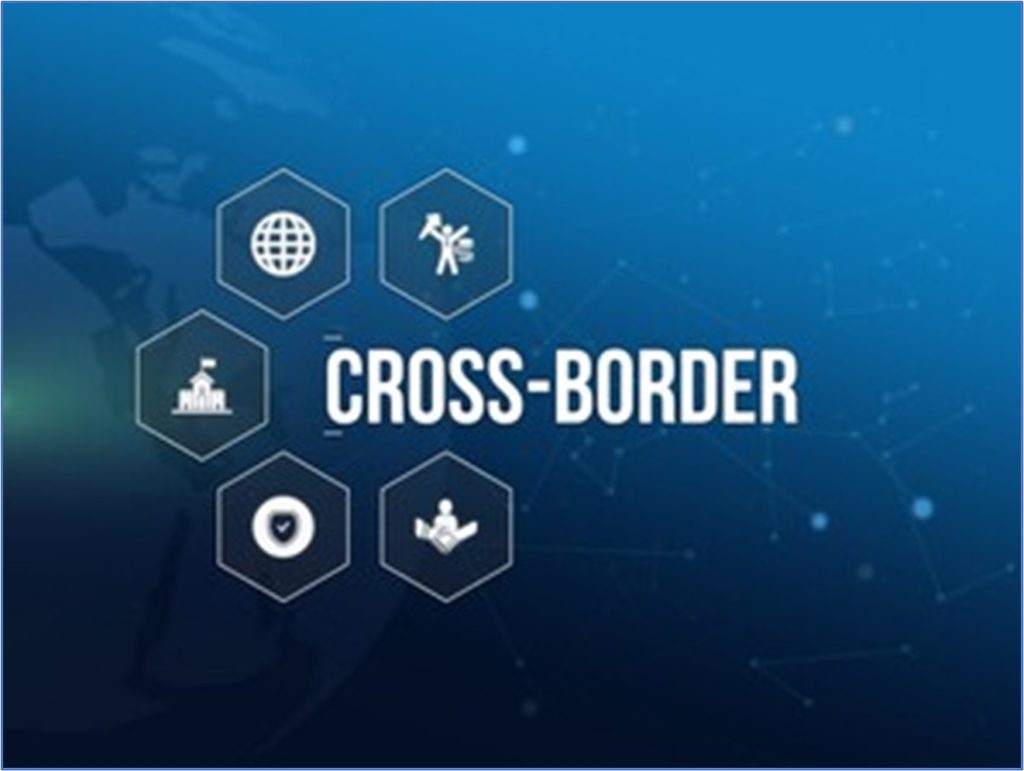
Fulfillment Free trade zones, or FTZs, are controlled places in a country that offer warehouse and distribution services for goods from foreign markets, excluding them from paying taxes on those goods. The value of such operations in 2021 was evident, with 1,200 active operations, 197 FTZs, and 356 production operations reporting in the US, says Site Selection Magazine (Forster). And they’re integral to maximizing global fulfillment too.
The value of shipments moving through free trade zones was over $835 billion compared to just $625 billion in 2020. This data supports the importance of trade zones in international trade. Generally, any trading party can create free trade zones around major seaports, international airports, and other areas where customs activities are higher.
With the economic benefits of free trade zones now more evident than ever, it’s essential to ask: “is your 3PL taking full advantage of the cost savings that free trade zones can provide?”
The answer, unfortunately, is only sometimes yes. Many third-party logistics providers are still charging customers exorbitant shipping fees and not leveraging the cost savings opportunities offered by FTZs. Still, what does that mean, and what’s necessary to reap the benefits of the cost-saving areas?
I. Initial Investment
The ideals behind free trade zones sound fantastic, but the number of free trade zones is far from the total number of all areas where a free trade zone may be appropriate. According to BBC News, such zones, also known as freeports, “are allowed in the European Union – with around 80 sites based in EU countries (Seddon) .”
Still, there are significant initial investments from a time and resources perspective that shippers should consider. These include:
- People and staffing requirements include skilled workers and managers that will do the daily warehouse operations.
- Strict processes and a paper trail to ensure compliance with regulations and track all transactions.
- Creating secure areas within a warehouse may be necessary to store goods, especially high-value goods and those subject to additional regulation, such as pharmaceuticals.
- Approval from governments, including the United States and the EU’s free trade zone board, legalizing the free trade zone might include submitting extensive records, proving the value of creating such zones, and conducting detailed analyses on its risks.
II. Benefits of a Free Trade Zone
- Bringing separate components and forming kits when shipping out – components are cheaper to import than kits / finished goods.
- Moves Value Added Services closer to the customer in many cases – Don’t have higher value material being imported and sitting waiting for orders.
- Reduce or eliminate certain duties and Value Added Taxes (VAT).
III. Challenges and Limitations
Pushing a free trade zone is only half of the battle. Managing a free trade zone can impact warehouse and distribution operations. Various compliance requirements, security protocols, and inventory systems need to remain compliant. Maintaining control over warehouse access and personnel procedures is also essential.
The ever-changing global trade policies and tariffs also mandate continuous monitoring and tracking via analytics and regular reporting. There is a constant need to monitor the external environment for developments and policy changes. Further, proper planning and implementation also imply a greater need to understand whether they add value to operations.
IV. Choosing the Right 3PL
Choosing the right 3PL to create and manage a free trade zone is of utmost importance. Your 3PL will have long-lasting implications for the success of a warehouse and distribution business. A 3PL provider with the experience and resources to handle foreign freight forwarding, customs clearance, and other services specific to a free trade zone is essential.
Their experience helps warehouse and distribution operations meet their goals. Thus, companies must conduct proper research to identify a 3PL familiar with local regulations, government programs, and global compliance requirements for such zones. They should also follow a few specific steps for choosing the right 3PL and maximizing the relationship:
- Assessing the particular needs and conditions of your business
- Researching and evaluating potential 3PL providers.
- Verifying the 3PL’s experience and expertise in FTZ setup and operations.
- Inquiring about their compliance and security measures.
- Asking for references and case studies from previous clients.
- Negotiating and evaluating the cost-benefit of the services offered by the 3PL.
Choose ModusLink for Help in Setting up and Leveraging a Free Trade Zone for Your Warehouse and Distribution Needs
A free trade zone is a must-have for today’s companies to reduce confusion over customs duty processes within the global supply chain. Further, customs territory differences and requirements may vary by region. It’s essential to use the latest technology and transportation management service providers, such as ModusLink, to maximize their value. Request more information to get started today.
Bibliography
Forster, James. Free Zones: Global and US Leaders Think Outside the Box. November 2022. 16 January 2023. <https://siteselection.com/issues/2022/nov/free-zones-global-and-us-leaders-think-outside-the-box.cfm#:~:text=%E2%80%9CThere%20were%20197%20FTZs%20active,%24625%20billion%20the%20previous%20year.>.
Seddon, Paul. Freeports: What are they and will they help the economy? 13 January 2023. 16 January 2023. <https://www.bbc.com/news/uk-politics-55819489>.
Disclaimer:
Content is the opinion of ModusLink Corporation and is not intended to act as compliance or legal advice.
-
How to Improve Global Fulfillment in 2023

Global Fulfillment in 2023 Introduction
The past years have shown the vulnerability of the supply chain. Just-in-time inventory philosophies have fallen short and resulted in lost site supply for warehousing and distribution centers, and the post-COVID consumer is more conscious of their decisions. The risk of the next disruption is just around the corner. Success in 2023 will depend on the success of supply chains, and one-third of company leaders believe their supply chain distribution problems will last through 2023 (SAP News).
The evidence is clear; supply chain leaders will face great uncertainty in the coming year. However, cross-global fulfillment will largely depend on the ability of warehouse and distribution centers to manage operations proactively. Furthermore, the decline in revenue, which will affect 58% of companies, will continue to undermine the efficiency of fulfillment strategies. Let’s look at how supply chain parties can improve warehousing and distribution in global fulfillment and distribution in the coming year.
Optimize Labor
Optimizing labor resources is the most common facet of cross-global fulfillment in 2023. According to Supply Chain 24/7, the continuous process of doing more with less and hiring more people to meet demand is inevitably facing a crossroads. A tightening labor market will mean that “warehouses that rely heavily on manual processes will be way behind the curve, and even those that still rely on outdated technology and legacy systems will struggle. However, advanced warehouse management systems, voice picking, light picking, and robotics can help fulfillment houses do more with less labor.”
As a result, the need to do more with less will become more integral to figuring out the best way to leverage resources and avoid overspend. Further, today’s supply chain professionals will face the persistent problem of defining what’s necessary and what could be over the next year. Thus, the best way forward will be to redefine operation standards and focus on tracking labor metrics that foster innovation and supply chain optimization.
Stay Flexible With Multi-Location Inventory Management
Another core strategy for success in warehousing and distribution will revolve around inventory management. According to UpKeep.com, the overwhelming majority of companies, 75%, are proactively looking to find ways to improve inventory management practices (UpKeep). Unlike a single-site supply inventory strategy, multi-location inventory management leverages all existing spaces down to the store level.
Using a centralized system that can visualize all activities and inventory needs is crucial. This central supply chain control tower ensures all companies can keep operating at peak capacity without breaking the bank.
Further, there may be instances where the success of the supply chain hinges on the reallocation of inventory between individual stores and distribution centers to fill more orders. Reducing the total volume and leveraging more space across multiple locations conserves resources (Rickerby).
Build New Fulfillment and Cross-Global Partnerships
The best partnerships should put your brand front and center. New fulfillment partnerships are a great way to leverage the sustainable and forward-looking premise of other brands as your own. This may also include leveraging additional site supply resources to avoid stock-outs and enhance cross-global warehousing and distribution. These partnerships demonstrate your commitment to a better future and will effectively boost your customers’ views of your brand. Plus, they reduce your total risk and costs along the way.
Improve Packaging
Any conversation on better warehouse distribution and fulfillment is complete with discussing packaging design and the ease of shipping. Poor packaging will upset customers and, even worse, additional waste. With 72% of American consumers saying that product design packaging influences their buying decision, it is no surprise that there is a marketing effort to make the outside of a box more appealing (Packaging Fulfillment Co., Inc).
Regardless, the message is still the same. Customers want eco-friendly materials and minimalist designs. Those facts allow customers to feel good about their purchases and how such purchases affect the global economy. That’s not to say that your brand cannot be evident on the package. Your brand should be apparent, but your message will reverberate beyond the package. It should indicate your commitment to sustainability and give rise to your need for a better tomorrow. In other words, be present, but do not go overboard. Provide the just-right level of packaging and ensure that your packaging is recyclable.
Prioritize the Customer Experience
Supply chain leaders who want to improve cross-global fulfillment, warehousing, and distribution must prioritize the customer experience. According to 2023 survey results, 45.9% of companies rate customer experience as the number one priority for the next five years, surpassing pricing and product (SuperOffice). Greater customer experiences have a self-propagating effect that will generate more demand for your e-commerce brand and reduce the confusion of fulfillment in the first place.
Choose ModusLink to Streamline Your 2023 Fulfillment Strategy
The right strategy for global warehousing and distribution in 2023 is not finite. Today’s supply chain leaders need a continuously evolving strategy to meet customers and do more with less. Fortunately, those that care can understand their supply chains and where to do more and less. Connect with an expert in global fulfillment to learn more about the value proposition of working with ModusLink today.
Bibliography
Packaging Fulfillment Co., Inc. 5 Custom Packaging Trends for 2023. n.d. 29 November 2022. <https://www.packagingfulfillment.com/5-custom-packaging-trends-for-2023/>.
Rickerby, Matt. How to Improve Your Multi-Location Inventory Management. 10 November 2022. 29 November 2022. <https://www.extensiv.com/blog/multi-location-inventory-management>.
SAP News. New Research Forecasts the State of U.S. Supply Chains in 2023. 24 October 2022. 02 December 2022. <https://news.sap.com/2022/10/us-supply-chains-in-2023-new-research-forecast/>.
SuperOffice. 32 CUSTOMER EXPERIENCE STATISTICS YOU NEED TO KNOW FOR 2023. 15 November 2022. 2 December 2022. <https://www.superoffice.com/blog/customer-experience-statistics/>.
UpKeep. What are the most interesting stats and facts about inventory management? n.d. 4 December 2022. <https://www.upkeep.com/learning/inventory-management-stats>.
-
7 Top Supply Chain Trends to Know for 2023

Supply Chain Introduction
The past few years have been chaotic and disruptive to the supply chain. It’s easy to tie everything back to COVID-19, but the reality tells a different story of continuous and cross-global disruption. Yes, COVID caused many issues, but other factors, including geopolitical changes, the war in Ukraine, weather events, peak season, and economic instability, have altered the fabric of logistics. With so much disruption fresh in mind, looking toward 2023 feels a bit more stable for every warehouse and distribution channel. However, the instability around the risk of recession remains, and knowing the top supply chain trends to watch in 2023 will help your organization prioritize operations and succeed.
1. Carriers Will Lower Rates But Keep Many Others
Carrier rates are declining across the board, and Seatrade Maritime News reported an “expected trough of freight rates to mid-2023 from 2024 with a lower demand forecast and a higher than expected effective capacity increase due to the unwinding of congestion. Sector profitability is set to hit bottom in second half 2023.” Additional predictions for rate decline have ranged from 51 to 80% (Hand).
The decline in container rates will precipitate further declines across other transportation modes and in all geographies. Still, accessorials may remain as they aren’t subject to the same lowering of typical per-mile costs (Flat World Global Solutions).
For instance, the continued push for higher wages means that time is of the essence, and delays on a loading dock still amount to lost time and wasted resources. As a result, carriers may apply additional accessorials to compensate for the bottoming of rates in tandem with rising labor costs.
2. Cost Control Will Be Even More Important
The cost control issue isn’t isolated to those in a warehouse or distribution company. According to SAP, a 58% decrease in revenue has contributed to additional financing and missed payments across the supply chain. US-based consumers evaluate pricing on every purchase, including considering the shipping costs associated with e-commerce. Warehouse and distribution managers and procurement professionals will need to start thinking about managing the customer experience better.
For international customers, the challenges of e-commerce are also making it troublesome to track landed costs and make the most of existing operations. The VAT tax and duties in the EU and Canada will pressure retailers to increase the visibility of operations and expenses.
3. Cross Global Visibility & Data Will Remain Critical
The issue of visibility is paramount in every facet of the supply chain, and in 2023, visibility and data will be integral to all improvements. They will also rise in demand in tandem with advanced technologies, including drones, AI, and robotics, as well as robotics process automation (RPA) tools.
The use of technology can help shippers and carriers mitigate rising costs, and to that point, many organizations have pursued additional means of digital transformation. For instance, 80% of respondents in a Forrester Consulting study conducted on behalf of KPMG, found that digital transformation is the most critical priority for organizations (KPMG Australia). Of course, any plan for improved visibility must coincide with a renewed focus on cybersecurity.
4. Cybersecurity Risk Management Will Grow More Important in Omnichannel E-Commerce
Cybersecurity risks are a prevalent fact in today’s supply chain. According to Check Point, “global attacks increased by 28% in the third quarter of 2022 compared to the same period in 2021. The average weekly attacks per organization worldwide reached over 1,130” (Check Point Research). And while the healthcare and education industries may most commonly suffer an attack, the supply chain is still at risk. After all, even healthcare and education have arms in the omnichannel e-commerce landscape, and each purchase around these industries ties back to the supply chain.
As a result, companies are actively investing in cybersecurity measures. Those investments will grow as more companies seek to embrace digital transformation fully and apply technology to do more with less.
5. Alternative Fulfillment Strategies Will Be Key
COVID taught supply chain professionals that nothing is certain. The effects of the COVID-19 pandemic will continue to drive cross-global change within the logistics industry, asserts Shopify (Keenan and Moore).
The pandemic revealed that the world could and does change even with lean inventory management practices in play and a strategy for every scenario. In response, today’s supply chains have fought to introduce new and alternate fulfillment models, such as hub injection, zone-skipping, and dropshipping, to reduce costs and avoid risks. Further, shippers might consider revamping existing omnichannel e-commerce capabilities to account for these changes in cost. For instance, it might be time to consider Shopify plus B2B features or define other distribution partners.
6. The Last Mile Will Become a Focal Point for Improvements
While alternate fulfillment forms a basis for improvements, the last mile will continue to become more critical in the supply chain throughout 2023. The last mile is where the actual interaction with the customer occurs. It’s also the riskiest and most costly part of transportation, and there is more handling and more opportunity for things to go wrong. Supply chains will look for ways to increase transparency, such as tracking goods in the last mile and providing more insight into those problems to keep everyone in the loop.
7. Geopolitics Will Still Be at Play
Geopolitics is the most wide-reaching of impacts that will affect the supply chain in 2023. The following year of development will be subjected to additional scrutiny and demands from governments around the globe. According to Forbes, Biden’s actions in late 2022 have triggered an ongoing cross-global challenge with how manufacturers operate with companies in China, saying “trade barriers are apt to increase” (Banker). Meanwhile, the war in Ukraine will undermine efficiency and worsen the semiconductor shortage due to the country’s role in producing neon gas—a precursory ingredient in manufacturing semiconductor chips. In turn, the supply chain will need to grow more agile and look for sourcing raw materials from other countries and regions. And it’s not isolated to neon; it could affect any commodity or material needed to maintain operations.
Align Your Organization With These Supply Chain Trends by Partnering With ModusLink
The supply chain trends of 2023 will center around the changing, cross-global landscape. Shippers, carriers, and other supply chain parties around the globe need to start thinking about how they can improve their organization and align operations with these trends now. Fortunately, ModusLink can help your organization achieve those goals. Connect with a ModusLink expert to get started today.
Bibliography:
Banker, Steve. Top Supply Chain Trends Heading Into 2023. 2 November 2022. 24 11 2022. <https://www.forbes.com/sites/stevebanker/2022/11/02/top-supply-chain-trends-heading-into-2023/?sh=2ea26e6e55e2>.
Check Point Research. Check Point Research: Third quarter of 2022 reveals an increase in cyberattacks and unexpected developments in global trends. n.d. 30 November 2022. <https://blog.checkpoint.com/2022/10/26/third-quarter-of-2022-reveals-increase-in-cyberattacks/
Flat World Global Solutions. 2023 Supply Chain Trends: What You Should Know. 19 September 2022. 28 November 2022. <https://flatworldgs.com/2023-supply-chain-trends/>.
Hand, Marcus. Container shipping to hit bottom in mid-2023, forecasts HSBC. 12 October 2022. 30 November 2022. <https://www.seatrade-maritime.com/containers/container-shipping-hit-bottom-mid-2023-forecasts-hsbc>.
Keenan, Michael, and Kaleigh Moore. Supply Chain Trends That Will Shape 2023. 21 October 2022. 20 November 2022. <https://www.shopify.com/enterprise/supply-chain-trends-strategies>.
KPMG Australia. Future of Supply Chain: The road to everywhere. February 2022. 30 November 2022. <https://assets.kpmg/content/dam/kpmg/au/pdf/2022/future-of-supply-chain-road-to-everywhere.pdf>.
SAP News. New Research Forecasts the State of U.S. Supply Chains in 2023. 24 October 2022. 25 11 2022. <https://news.sap.com/2022/10/us-supply-chains-in-2023-new-research-forecast/>.
-
A Review of the Top EU E-Commerce Shipping Challenges

Top View Cargo containers ship logistics transportation Container Ship Vessel Cargo Carrier. import export logistic international export and import services export products worldwide With all the turmoil and upheaval, the global supply chain has endured since 2020, the impact of changes the EU is initiating stands to throw more disruptions and issues at shippers. Managing cloud-based e-commerce platforms and global shipping logistics is a vital part of the process of overcoming cross-border challenges for online retailers.
According to the industry experts at Whistl, “The EU’s e-commerce industry has been experiencing a lot of positive growth over the past few years. A new report from the industry association E-commerce Europe found that there was a 15% growth in 2016 and the industry is predicted to be worth €602 billion by the end of 2017. That would represent a further 14% year-over-year growth.” (Whistl, 2017). This level of growth and value highlights the challenges of e-commerce and the need for strong cross-border e-commerce logistics and operations.
The growth seen within e-commerce and online transportation are indicative of changing market trends and consumer purchasing habits. As businesses open and people start returning to some semblance of normalcy in their day-to-day habits, the demand for fast and reliable shipping service remains as important as ever. Consumers have gotten used to the benefits of cross-border e-commerce and shipping and are unlikely to go back to accepting slower shipping options for many of their shopping demands (Yun Express, 2022).
Increasing e-commerce shipping, services, and sales along with advances to VAT and import/export services have all helped achieve this and create such projections. Cloud-based e-commerce platforms with the right merchant of record (MOR) pay model is crucial in helping companies in Europe be prepared for a number of challenges that face the e-commerce and online store shipping industry.
The Importance of E-Commerce Shipping and Logistics in EU Transportation
Many of the most commonly cited challenges of e-commerce within the EU are those that impact logistics, shipping, and customer service. Companies dealing with the transportation of goods, whether importing or reporting, must be mindful of advanced e-commerce shipping advancements.
With improved digitalization and automation, cloud-based e-commerce platforms become much more influential and impactful. According to Ecommerce Europe, “Western Europe is, by far, the strongest region in terms of B2C e-commerce turnover, holding 63% of the total turnover for 2021. Southern Europe follows in second place with just 16% of total turnover, while Central Europe and Northern Europe come in third and fourth (10% and 9% respectively), and Eastern Europe (2%) in last place” (E-commerce Europe, 2022). E-commerce services can be a major factor that plays into EU services.
The continued focus on cross-border e-commerce and having the right MOR) is critical for continued growth and recovery within the B2C commerce industry. Dealing with the top challenges of e-commerce often relates to one of the following cloud-based e-commerce platform issues or cross-border e-commerce concerns.
Delivery Speed and Accuracy Falling Below Acceptable Levels
Issues with the speed and accuracy of deliveries remain the most reported problem for e-commerce businesses in the EU and many other countries as well. Customers who experience delivery failures, delays, and problems are unlikely to give shipping companies a second chance.
Despite the close transport networks and links that connect many European countries, due to issues such as weather anomalies, local and global politics, environmental factors, and cloud-based e-commerce platform problems, delivery issues continue to be an issue.
The findings from the “Tomorrow’s Supply Chain: Disruption Around Every Corner” report by SAP highlight that “since the start of the pandemic, supply chain issues have been disastrous for organisations in the UK. 66% of businesses have experienced delays in the production of goods/delivery of services, 64% have seen revenues decrease and 58% have experienced a loss of customers. Given this outlook, it perhaps comes as little to no surprise that almost a quarter (23%) of businesses expect supply chain issues to last until Summer 2023.” (System Analysis Program Development)
The ultimate cause for these issues with speed and accuracy comes down to poor management within the supply chain in the UK and with other EU countries. Without access to cloud-based e-commerce platforms and the delay in embracing cross-boder e-commerce solutions the bottlenecks and delays continue to impact speed and accuracy with EU deliveries.
Technical Supply Chain Issues Within the EU Network
Technical failures within cloud-based e-commerce platforms are another risk for e-commerce service providers within the EU. Cyber-attacks and hackings have been on the rise, with reports showing nearly half of all businesses experienced at least one cybersecurity breach or attack over the last year. The latest innovations in supply chain tech and cyber security keep companies protected but they must be properly applied, onboarded, and embraces in order to be successful, something many companies have been slow to understand.
Many supply chain networks and companies in the EU today struggle in this area due to poor management of current tech trends and a reliance on outdated data and processes. Tech Monitor noted in a report last year that, “Taking a look across our supply chains, the current system remains highly fragmented, often paper-based, with limited interoperability, sporadic collaboration, and poor information flow… Organisations have a colossal amount of data at their fingertips, but the majority are either not gleaning the right insights from this data, or are failing to share meaningful information with key stakeholders.” (Tech Monitor, 2021)
For businesses dealing with cross-border e-commerce this is obviously a serious problem. Digital companies stand to be impacted more than more traditional companies as the majority of their activities are based online and rely on omnichannel supply chains.
Political Landscape and Cross-Border Regulatory Change
There are a number of issues that have impacted cross-border e-commerce in Europe, some of the most well-known being the Brexit vote and changes to VAT processes. Challenges of e-commerce become all the more complicated when political factors come into play. More expensive trading costs and new regulations are expected to impact e-commerce companies in the coming years.
However, ongoing Brexit negotiations, VAT regulations, and other changes also will come into play for international shipping providers. This was highlighted in a 2022 report from nShift that noted even before Brexit, UK consumers were often hesitant about dealing with cross-border e-commerce and ordering from abroad. This recent survey asked 1000 UK residents why they avoided buying products from overseas. The major issues, with each earning more than 50% response, included concerns about returns, returns, high delivery costs, and the delivery process itself (nShift 2022).Another concern for B2C and B2B e-commerce shippers in the EU is that the existing policies and regulations are changing and updating at a rapid pace. The European cloud-based e-commerce platforms that play a role in e-commerce shipping services are always in a state of fluctuation. New regulations and changes to EU shipping processes and requirements will make it all the more vital that importers and exporters have a single source of information and service. From financing to merchant services, a single point of contact will be much easier to manage and track as political uncertainty continues to plague EU cross-border e-commerce businesses.
Purchasing Power
Ongoing global factors including war and other supply chain disruptions are proving to be major consequences on the European economy overall and the cross-border e-commerce industry as well. A number of companies within the transportation industry have reported declines in consumer purchasing power and confidence.
Cloud-based e-commerce platforms can be influential in improving customer experience, services, and purchasing power. All of this change in purchase power is mostly due to high energy prices, inflation, shipping costs, supply chain issues, and overall uncertainty. AJ Todd of Flock Freight noted that “3PL’s are skilled at finding areas for extra cost savings, such as more efficient routing or carrier selection. Plus, by placing it in the hands of experts, you no longer have to focus on day-to-day oversight of your transportation supply chain” (Flock Freight, 2019).
Working with a 3PL provides management with greater access to data and provides them with greater bargaining power with carriers, shippers, and forwarders. It can significantly improve cross-border e-commerce processes from start to finish. EU businesses that work with a 3PL can often see consistent benefits that include a reduction in rates for transportation and stronger logistics services.Overcome the E-Commerce Shipping Challenges With ModusLink
Although the EU’s e-commerce industry has seen growth in many sectors over the last few years, there are still many effects from COVID-related shutdowns being felt today. European e-commerce solutions providers and medium to small businesses should still be prepared for a number of challenges that face the industry.
These common challenges of e-commerce cannot be completely avoided but they can be mitigated and largely avoided by having a merchant of record (MOR) and the right approach to e-commerce shipping within Europe.
Contact ModusLink today to learn more about how our cloud-based e-commerce platform and unique approach to cross-border e-commerce and MoR payment services can impact EU E-commerce.
Bibliography
AJ Todd (2/4/19). 5 Benefits of Working With a 3PL. Flock Freight. Accessed 10/31/2022
From https://www.flockfreight.com/blog/5-benefits-of-working-with-a-3pl/
Delivery Management (7/3/22). How might Brexit impact delivery and cross border shipping? nShift. Accessed 10/31/2022 From https://nshift.com/blog/brexit-impact-delivery-cross-border-shipping
Jeremy Silver (8/23/21). The future of the UK economy depends on supply chain innovation. Tech Monitor. Accessed 10/31/2022 From https://techmonitor.ai/leadership/innovation/future-of-uk-economy-depends-on-supply-chain-innovation
Press Release (6/8/22). Supply Chain Crisis: Over 85% Of UK Businesses Plan To Move From ‘Just In Time’ To ‘Just In Case’ Model And Prioritise UK-Based Solutions To Overcome Challenges. SAP. Accessed 10/31/2022 From https://news.sap.com/uk/2022/06/supply-chain-crisis-over-85-of-uk-businesses-plan-to-move-from-just-in-time-to-just-in-case-model-and-prioritise-uk-based-solutions-to-overcome-challenges/
Luca Cassetti (6/28/22). European e-commerce still growing but new global challenges lie ahead. Ecommerce Europe. Accessed 10/31/2022 From https://ecommerce-europe.eu/press-item/european-e-commerce-still-growing-but-new-global-challenges-lie-ahead/
Whistl (7/1/2017). Main Challenges Facing European E-commerce Businesses. Whistl. Accessed 10/31/2022 From https://www.whistl.co.uk/news/main-challenges-facing-european-e-commerce-businesses
Yun Express (3/15/2022). Top Three Challenges to Mind for Your E-commerce Logistics across Europe. Yun Express. Accessed 10/31/2022 From https://www.yunexpresseu.com/blog/top-three-challenges-to-mind-for-your-e-commerce-logistics-across-europe/
.
-
Latest trends in Supply Chain Digitization & Automation
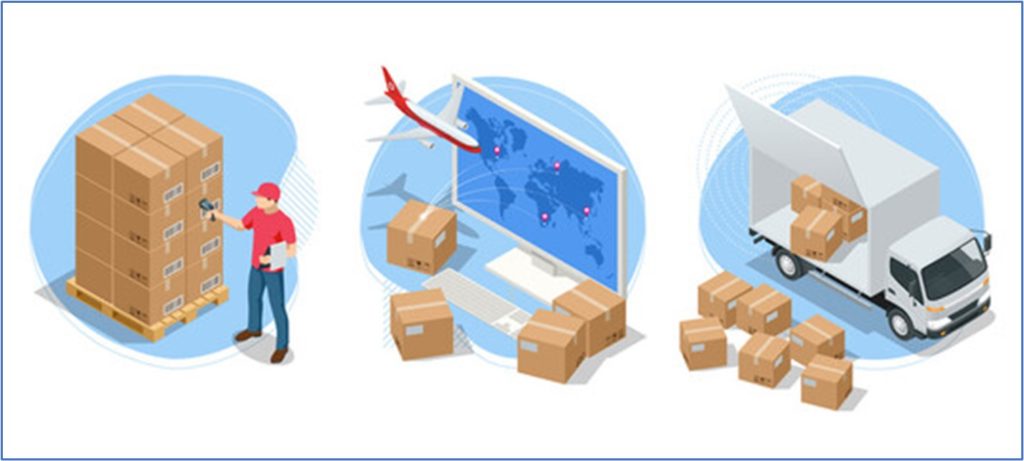
Introduction
To say 2020-2022 was a challenging year for the supply chain industry is one of the biggest understatements of the decade. The aftermath of COVID-19 can still be seen across global supply chains. The pandemic clearly showed the importance of having a solid foundation and bonded logistics in place. A solid infrastructure and reliable tech stacks founded on the latest digitization and automation can make all the difference. This is especially true when faced with disruptions and obstacles.
According to K.P.M.G. (z.d.), in Europe, the rise of e-commerce is pressuring retailers, manufacturers, transport, warehouse, and logistics companies to fulfill and deliver fast, in total, and meet high expectations for order status, supply chain visibility, enhanced service, and return logistics. A trend that has risen within the industry is related to a shift in customer demands.
To reinforce delivery assurance and supply chain resilience, customers (both B2B and B2C) now require end-to-end networks to hold more transparency, embrace omni logistics, focus on bonded logistics, and increase their visibility. All of this can help improve supply chain performance.
Greater visibility requires stakeholders in the chain to have the same visibility to decrease disruption while monitoring for new ways to implement improvements. The key takeaway is that shippers and carriers now require their physical and digital workflows to be more synchronized. The emphasis on greater visibility and transparency is at the heart of supply chain optimization. It all can be achieved through digitization and automation of e-commerce platforms and processes.
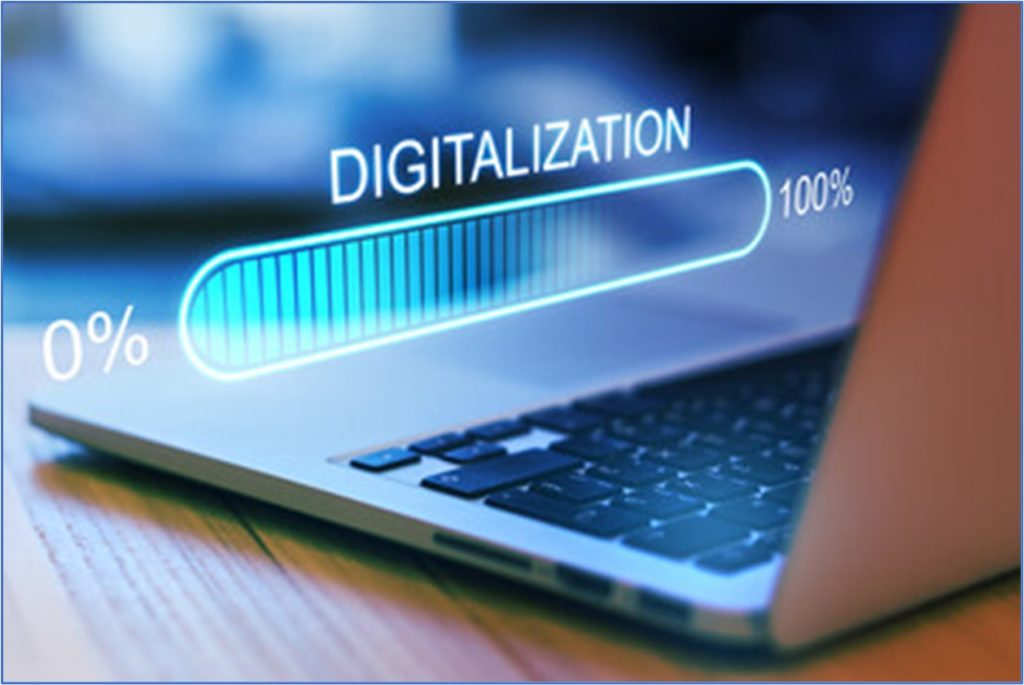
Digitalizing your Supply Chain
With technology growing faster than ever, supply chain optimization is critical for ongoing success and recovery. Managers and business owners alike need to incorporate the most advanced technological processes to reinforce the resilience of their supply chain networks. Digitalization of e-commerce solutions can be achieved in many ways.
First things first, what exactly does it mean to have good supply chain operations and planning?
According to Team D.F. (2021), Supply chain digitization (or digital transformation) is the process of turning analog processes into digital ones by establishing dedicated master data.
By doing so, it allows aggregate information from across your entire supply chain, as well as information from some external sources to be compiled. This can include internal historical sales data, point-of-sale consumer data, socioeconomic data such as unemployment rates, and external data from outside sources.
Overall, the process is most commonly achieved through the use of dedicated software and a focus on omni logistics and supply chain optimization through digitalization and automation. The tightrope of balancing supply and demand is easier with the right processes in place.
Supply Chain Advantages Seen Today
The advantages of shipping and distribution innovation and integration are far-reaching and include the following:
- Synchronization – Digital processes are far easier to connect. This makes the entire process, whatever process it is, react much more smoothly. Analog methods are complicated to align correctly but working with bonded logistics services and automated processes streamline the entire process.
- Time-saving/Efficiency – Digital supply chain processes are far more efficient, thus saving valuable time. Automatic inventory and CRM processes, for instance, can save ample time when executed correctly. Omni logistics make this all the easier to implement and maintain.
- Decision-making advantages – Having better control of your digital data allows you to leverage your position when going into a new decision-making process. This aspect of supply chain optimization should never be underestimated as it allows for a much better negotiation position.
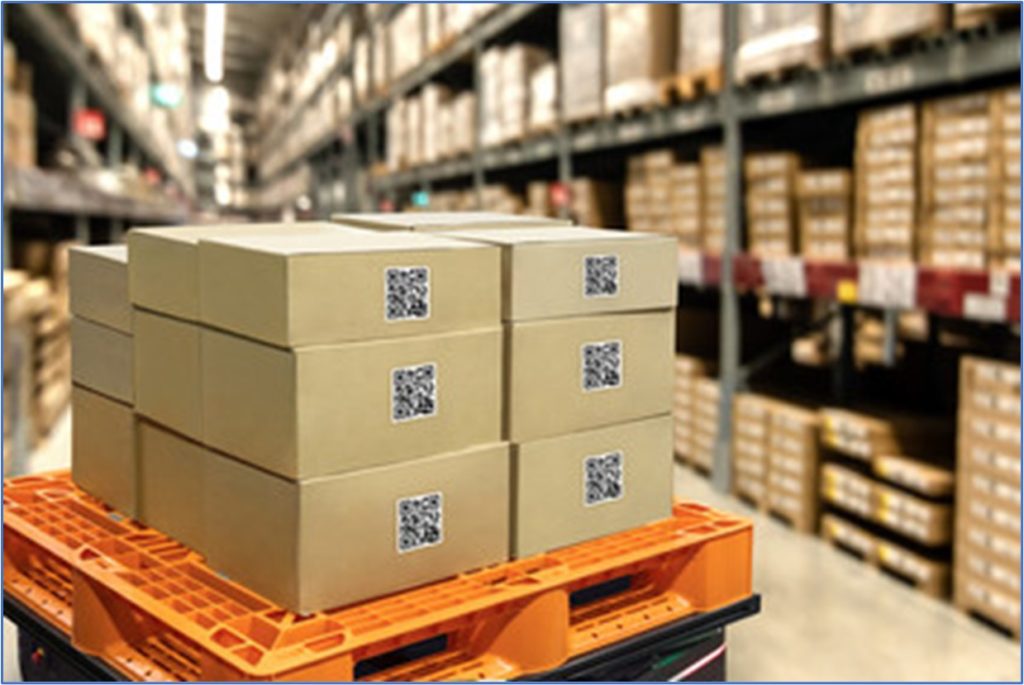
Implementing Automation
The next Trend expected to continue in 2022 is the increasing usage of Automation. Again, the increase of viable technological advancements also results in manual process to be automated. This can be easily seen through the increasing usage of AGV (Automated Guided Vehicles) that allow for immense efficiency increases in warehouses. Daunting manual labor that can be Automated (e.g., Packaging) should be automated as fast as possible as strong efficiency increases are easily seen when done so accordingly. According to Vanner (2022),
Benefits of Improving Supply Chain Processes
The benefits of implementing integrated systems and advancing supply chain processes with updated tech include:
- The Automation of manual tasks – Automating daunting manual labor yields the highest efficiency boosts as these tasks usually allow for substantial process time deductions.
- Increasing Transparency and Visibility – Self-managing tasks usually come with the innate ability to capture and share data from supply chain design and processes that have been automated.
- Flexibility and Adaptation – Streamlined, automated inventory management software will enable companies to increase their control by automatically ordering raw materials/inventory when inventory levels fall below a set percentage.
Tap Into the Latest Trends and Unlock Benefits With ModusLink
With a keen eye on the latest in innovation and partnerships with bonded logistics providers, supply chain optimization can be easier than many have ever thought possible. Supply chain managers and shipping service providers can utilize the power of omni logistics and integrated technology to improve services for cross-border supply chain networks.
Would you like to know more about the latest automation and digitalization developments for supply chains and how they can help you meet and exceed customer expectations? Talk to a ModusLink expert today to learn more.
Bibliography
Bendis, M. (2022, 17 mei). Industry 4.0: the digital supply chain. EasyStock. Geraadpleegd op 20 mei 2022, van https://www.eazystock.com/uk/blog-uk/digital-supply-chain-digitization/
K.P.M.G. (z.d.). Five supply chain trends to follow in 2022. Zetes. Geraadpleegd op 19 mei 2022, van https://www.zetes.com/en/supply-chain-visibility/supply-chain-visibility-software/five-supply-chain-trends-to-follow-in-2022.
Team, D. F. (2021, 19 augustus). What Is Supply Chain Digitization, and Why Does It Matter? DDC Freight Process Outsourcing. Geraadpleegd op 19 mei 2022, van https://www.ddcfpo.com/freight-process-insights/what-is-supply-chain-digitization-and-why-does-it-matter
Vanner, C. (2022a, februari 7). Supply Chain Automation: What is it and How Can it Benefit Me? Bizagi Site. Geraadpleegd op 20 mei 2022, van https://www.bizagi.com/en/blog/supply-chain-automation-what-is-it-how-can-it-benefit-me
Vanner, C. (2022b, februari 7). Supply Chain Automation: What is it and How Can it Benefit Me? Bizagi Site. Geraadpleegd op 20 mei 2022, van https://www.bizagi.com/en/blog/supply-chain-automation-what-is-it-how-can-it-benefit-me.
-
Choosing a Fulfillment Partner
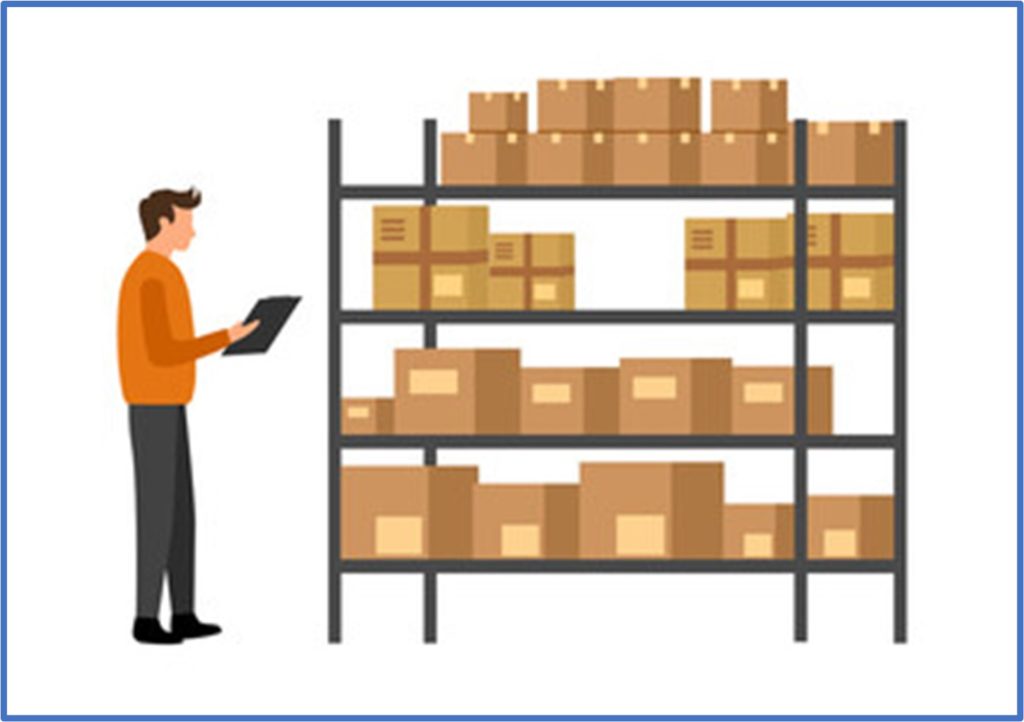
Short term – Long term
The importance of fulfillment as a service and site supply logistic management is widely known in the corporate world. This is true for shippers, carriers, and any packaging and distribution resource management teams.
For those dealing with cross-border logistics and shipping these concerns are even more critical. Issues such as reliable site supply, packaging and distribution management, and customer retention all directly impact logistics companies and their partners. Also, poor fulfillment management can lead to fulfillment costs comprising as much as 20% of net revenue, reports Forbes, up from 5-10% today.
Choosing a fulfillment partner that is up to the challenge can save transportation service providers a lot of time and money by avoiding potential problems in the future. It is important to keep in mind that the partnership may last a significant amount of time.
So short and long-term needs for shipping services with digitization and automation must be addressed.
This means that sometimes, the long-term element must be prioritized over the short-term elements. Everything from packaging and distribution to third-party collaborations needs to be carefully considered when choosing a partner within the logistics industry.
5 Key Elements to look out for
In this article, logistics companies will learn about the five most important aspects to look out for when choosing a fulfillment partner for on-site supply, order fulfillment, and logistics. They are as follows:
Experience and Reputation
When management teams choose an inexperienced provider that’s new to the industry, they run the risk of delivering a poor brand experience to customers. The impression on the end customer is often directly related to fulfillment performance.
This increases the need to partner with a well-established, reputable company that is experienced in site supply logistics and fulfillment. Even the largest logistics companies today rely on a team of experienced fulfillment partners and outside parties to get the job done.
It is vital to conduct business with a company that has years of proven experience and staff that is trained and knowledgeable in all areas of the business and supply chain management.
Business owners and logistics companies in North America and other regions as well often look for partners with a similar business model and approach to business. This way all involved parties will have direct feedback that enables faster and more accurate decision-making.
Lastly, meeting the packaging and distribution and fulfillment partner in person might reinforce the relationship which could lead to potentially increased problem-solving in the future. Don’t disregard your company’s reputation in favor of price and make sure they are professional and reliable before you choose them as a partner.
Navigating the changing landscape of e-commerce and current market trends requires reliable coordination and collaboration at all times.
Seamless Integration
This element of site supply logistics management makes the initial set-up process much easier. Set-up should not be a hassle and should not be the most dreaded part of the onboarding and integration process.
An experienced professional fulfillment partner usually has all types of integrations available that make your life easier. Third party logistics can help keep things running smoothly day in and day out.
They sometimes offer real-time views of transport, inventory management, warehousing, etc. Make sure to discuss this topic thoroughly before establishing your partnership to avoid the rise of potential issues in the future.
When reviewing the integration possibilities, consider aspects such as omnichannel integration (price/delivery/transport/warehousing), CRM/ERP platform integration, automated email communications, real-time packaging and distribution, etc. It is well worth the effort to find logistics companies that offer these sorts of solutions and services.
Reverse Logistics and Performance
Fulfillment service providers, like logistics companies and other shipping service providers, can also offer the option to handle the complete returns process. Known as reverse logistics, this is the backward flow of inventory and shipments. It can significantly complicate supply lines and make life harder for logistics managers and business owners.
Working with a partner experienced in reverse logistics and performance can save time and money.
Reverse logistics is vital for successful shipping logistics and packaging and distribution. It should always be considered due to the high brand impact potential. This is especially true of cross-border e-commerce and shipping where returns could potentially cost more than the initial shipment.
Make sure to review the performance metrics of logistics companies and partners to ensure there are no nasty surprises down the road and that everyone involved knows what to expect. Also, make sure to consider switching your current service provider and partner if there is a better option available that can save you time and money.
Warehouse Locations
We currently live in an era that follows the golden rule of ‘the faster the better’. Of course, this is not always true, however, customers do expect their shipments to be delivered to them as fast as possible. 7+ days for delivery times are usually not acceptable anymore for site supply logistic services.
The average delivery time within Europe is around 2-3 days. Experienced fulfillment partners sometimes even offer same-day delivery, depending on your business model. Regardless, it is important to have knowledge of the fulfillment partners’ infrastructure.
Knowing where their warehouses are located and even knowing traffic routes might validate the claims of delivery performance. It will significantly improve packaging and distribution, and boost the services and logistics solutions offered.
Working with shippers, carriers, customs brokerage companies, and logistics managers is vital to ongoing growth and recovery today. It ensures everyone knows what their responsibilities are and that everyone stays on the same page with site supply logistics management.
Brand Reinforcement
The final point to consider when choosing a fulfillment partner for the modern-day service provider is the reliability and reputation of the logistics companies. It is often the small things that make a difference.
Customization is an important element that should be considered when choosing a fulfillment partner. Providing the customer with a strong personal brand experience can have highly positive impacts on customer retention and continuous purchases.
Allowing managers and team members to use custom packaging options may make a difference for M-commerce businesses. It can also provide a competitive advantage by providing customers with the brand experience they seek.
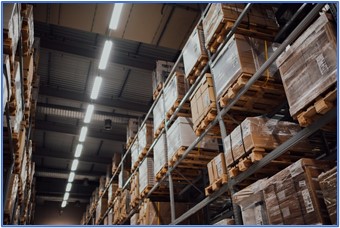
These five key elements should be kept in mind when considering a fulfillment partner to outsource your shipping and transportation services. Expert insight makes every step of the process, from site supply management, packaging and distribution tracking, and customer service simpler and easier. Whether you are dealing with truckload, ocean, rail, or air freight, improved logistics management and distribution will improve processes from start to finish.
Finding the best logistics companies can make all the difference! Would you like to know more about how to choose the correct fulfillment partner? We have many services, including customized options that can meet all of your needs. Talk to a ModusLink Expert today to get started!
Bibliography
Prozan, Esther Kestenbaum (2022, May 21) Fulfillment Is At The Epicenter of E-Commerce Enablement Accessed October 19, 2022 From https://www.forbes.com/sites/forbesbusinesscouncil/2021/05/21/fulfillment-is-at-the-epicenter-of-e-commerce-enablement/?sh=2550fbb56113
Busby, A. (2019, 24 oktober). Fulfillment As A Service, Why The Future Of Delivery Is In The Clouds. Forbes. Geraadpleegd op 26 februari 2022, van https://www.forbes.com/sites/andrewbusby/2019/10/23/fulfillment-as-a-service-why-the-future-of-delivery-is-in-the-cloud/?sh=6b83309d4af1
business.com editorial staff. (2014, 25 juni). Benefits of Using an Order Fulfillment Service. Business.Com. Geraadpleegd op 2 maart 2022, van https://www.business.com/articles/benefits-of-using-an-order-fulfillment-service/
Roggio, A. (2011, 4 november). 5 Reasons to Consider Fulfillment Services. Practical Ecommerce. Geraadpleegd op 5 maart 2022, van https://www.practicalecommerce.com/5-Reasons-to-Consider-Fulfillment-Services
Thill Inc. (2021, 21 oktober). Fulfillment Center Pros & Cons. Thill Inc. Geraadpleegd op 5 maart 2022, van https://thillinc.com/blog/fulfillment-center-pros-cons/
3Pl, L. (z.d.). 7 tips for choosing a fulfillment partner. Logicos. Geraadpleegd op 5 maart 2022, van https://www.logicos3pl.com/en/blog/tips-for-choosing-a-fulfillment-partner
Lab, T. F. (z.d.). 8 Essentials When Choosing a Fulfillment Company + 8 Best Companies for 2021. Thefulfillmentlab. Geraadpleegd op 7 maart 2022, van https://www.thefulfillmentlab.com/blog/choosing-fulfillment-company
Roggio, A. (2011, 4 november). 5 Reasons to Consider Fulfillment Services. Practical Ecommerce. Geraadpleegd op 5 maart 2022, van https://www.practicalecommerce.com/5-Reasons-to-Consider-Fulfillment-Services
-
IOT SupplyChain Tools (Internet of Things)
The supply chain network today has been under more pressure than ever before, and it is not just COVID-related disruptions impacting every aspect of shipping and legacy logistics. Supply chain management is a complex and often confusing process that requires careful planning and monitoring of the network. The importance of digitization and automation today cannot be underestimated.
According to a 2019 review from The International Journal of Product Research “supply chains are operating under an ever-changing environment and are vulnerable to a myriad of risks at all levels. This environment is an ever-changing landscape because of many factors. Many supply chains extend over wide geographical areas and are vulnerable to global risks.
Customers are increasingly demanding in terms of product customization, price, and level of service.” Improving, supply chain optimization and updating routine processes and procedures are critical to maintaining a competitive advantage today.
Added to this is the increasing complexity of goods and products, making it more time-consuming to package, handle, and ship popular items. The rapid technological changes, the continuous introduction of new products, the changing service provided by logistics providers, and shifting market demands keep the supply chain under pressure.
And on top of all that, changing climates- weather and global conflicts- puts global supply chains under increasing pressure. Warehouse automation, delivery tracking, and digital shipping services help to offset these sorts of obstacles for shippers, M-commerce managers, and transportation service providers.
The fastest and most effective way to combat this is to improve tracking and monitoring services with innovative tech and tools. Many of the electric devices/sensors that are applied to intelligent packaging use the global interconnected network.
The concept of IoT (internet of things) within warehouse operations and shipping logistics is quite complex. It is aimed at providing global corresponding network infrastructure and improved supply chain optimization for connecting objects to the cyber-physical world.

The utilization of IoT tools (Internet of Things)
Many of the electric devices/sensors that are applied to smart packaging use the global interconnected network called the Internet of Things. The concept of IoT (internet of things) is aimed at providing a global interconnected network infrastructure for connecting objects to the cyber- physical world. It enables companies to track and trace their products which are equipped with sensors devices (Cheung, 2018).
IoT Tools- A Logistics Providers’ Friend
The main IoT tools are elaborated upon below.

RFID (radio-frequency identification): is an electronic sensor and data collecting system using RF signals located on packages to monitor critical parameters such as temperatures, pressure, and vibration which captures and communicates data about how the products are moving along the supply chain and enable organizations to track and trace the product during its journey from manufacturer to customers (Cheung, 2018). The use of smartphones to increase the supply chain visibility and anytime access by using available handled devices is quickly standardizing for companies’ solutions. The technology is optimal to track products that are in transit (Fedex, 2020).
Traditionally, inventory counts were a complex exercise done manually about once a year but RFDI technology enables retailers such as Macy’s to monitor stock monthly bringing accuracy from 60% to over 90%. Macy’s reported that it experienced 2-3% inventory inaccuracy per month which is 24% annually but by implementing RFID solutions it minimized out-of-stock situations, provides real-time merchandise location data and allows to track their inventory throughout the retail supply chain (Bianchi, 2017).

This is non-contact near-field communication technology. NFC reader is a tool that can be integrated into the warehouse management picking verification system. The benefits of using such technology are widespread for customers, retailers, shippers, and logistics providers. Its ability to sync with smartphones and mobile devices helps improve delivery. NFC enabled devices are increasingly popular in today’s shipping lanes.
Enhanced supply chain optimization allows faster communications, automated updates, and push notifications to be sent in real-time between fulfillment partners and e-business owners. Furthermore, it helps eliminate the paperwork and provides information about the inside of the package. This can include the location of the product inside the warehouse, the description of the item, and the number of items inside the warehouse.
Customers who have an NFC chip or NFC tag enable phones to read information from the NFC on the label with additional information about the product and find out if the bottle was in some way misused. It also allows the company to track the product during the whole supply chain, storage, and opening times (Vasić, 2018).

Barcode label:
Plenty of processes involved in shipping and logistics today rely on administrative documentation and legacy logistic basics. Using these barcodes and rack labels save a lot of time for the different employees and managers involved in the process.
The packing and picking process is simplified as they only need to scan the barcode and receive all the required information about a given product instantly. The barcode label also benefits in managing inventory by tracking the exact location and movements of products. They can even make inventory management easier in the long run.
This applies to whether the movement is in or out of the warehouse facility. All this improved tracking helps to eliminate delays and errors. Barcode labels are usually called the foundation of automated warehouses. It was the first data tracking technology and referred to one-dimensional data, meaning that they can only hold information in the horizontal dimension.
They provide several crucial benefits such as inventory tracking, arrival planning, and improved picking efficiency. Areas such as traffic optimization decreased human data entry errors, and reduced out-of-stock situations also see great improvement (Jules, 2020).
Figure 1Vasić, Đ. &. (2018). NFC Technology and Augmented Reality in Smart Packaging.
The table above compares the different CRM technological devices in terms of speed, scalability, devices needed, sensing distance, and error rate. It is obvious that compared to the verification systems, the manual work is slower, and error rates are high, giving more work for logistics providers (Vasić, 2018). A strong supply chain management software platform can make all the difference in the world!
Improve Shipping Tracking and Delivery With a Strong Logistics Provider
All the different devices result in advantages for supply chains through the use of IoT tools and help companies in their daily operations. From e-commerce websites to handheld devices to remote networking and logistics, every step of the process can be improved with the right logistical approach.
Although the initial cost concerning new sensor technologies is high, the inherent opportunities incentivize companies to invest in the integration of IoT. Whether it is barcode automation, NFC forum platforms, or RFID tools, innovations are helping companies offer better shipping options for their customers. The e-commerce challenges facing companies today are only going to intensify as demand continues to grow.
Having a strong and reliable supply chain management SCM in place can help shippers, retailers, and customers reap the benefits of digitalization. Would you like to know more about how ModusLink can implement IoT tools when managing logistics providers and see how easy it can be to improve supply chain optimization? If so, then contact ModusLink today to get started!
Bibliography
Bahron, Zied and Ben-Daya, Mohamed (2022 November) Internet of things and supply chain management: a literature review Accessed October 18, 2022 From https://www.researchgate.net/publication/321131587_Internet_of_things_and_supply_chain_management_a_literature_review
Aliakbarian. (2019, February 20). Smart packaging: challenges and opportunities in the supply chain. Retrieved from supplychainquaterly.com.
Bianchi. (2017, June 28). 5 Examples of Innovative Uses for RFID Technology in Retail. Retrieved from shopify.com.
BioSpectrum. (2012, July 16). Packing smart for better reach of vaccines. BioSpectrum digital edition. Retrieved from https://www.biospectrumasia.com/.
Cheung, S. &. (2018). Smart Packaging: Opportunities and Challenges. University of Liverpool & University of Northumbria, Department of Mechanical and Construction Engineering & Division of Industrial Design. Liverpool: Elsevier.
Choudhury. (2018, April 05). Top Benefits of Smart Packaging for Packaging Companies | Infiniti Research. Retrieved from Infinity research.
Emprechtinger. (2019, April 18). 5 things you should know about smart packaging. Retrieved from lead-innovation.com.
Fedex. (2020). Tracking Technologies Are the Cornerstone for a Competitive Supply Chain Strategy. Retrieved from Fedex.com.
FreightPOP. (2019, September 3). Barcodes, QR Codes, & RFID In Supply Chain Management. Retrieved from freightpop.com.
Hou, L. &. (2016). The Application of NFC Verification System in Warehouse Management System. South China University of Technology, School of Computer Science and Engineering. Guangzhou,: Atlantis Press .
impacx. (2020). What is smart packaging and its benefits? Retrieved from impacx.io. Jules. (2020, April 8). warehouse automation 101: a complete guide. Retrieved from easyship.com.
Pagliusi, J. &. (2020). Roadmap for strengthening the vaccine supply chain in emerging countries: Manufacturers’ perspectives. Elsevier.
Regattieri, S. &. (2013). The Important Role of Packaging in Operations Management. In Operations management .
Richelle. (2021, January 11). Smart packaging. (Boulanger, Interviewer) Thrams. (2020, November 25). Big Benefits of Smart Packaging
Retrieved from primarypackaging.com.
Vasić, Đ. &. (2018). NFC Technology and Augmented Reality in Smart Packaging. University of Novi Sad, Faculty of Technical Sciences., Department of Graphic Engineering and Design. International Circular of Graphic Education and Research.
Ward, h. &. (2019). Rethinking packaging. DHL , Supply chain department. DHL Customer Solutions & Innovation Represented by Matthias Heutger.WHO. (2020). Bar-codes, QR codes and Vaccine Vial Monitors in the context of COVID-19
vaccines. World Health Organization.